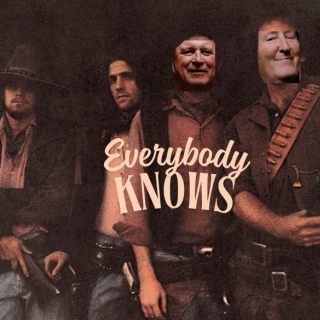It’s now been a little more than a year since I came on as a music writer for the Freep, and on a rather rare basis, I get asked how I managed to pick this gig up. Obviously, it wasn’t any sort of merit-based thing, as my previous writing experience consisted of Sixth Circuit Briefs, diatribes ripped off from Hunter S. Thompson, and a penchant for hate mail (although not hate e-mail -- I like the idea of people at the Dispatch or Fox News actually having to open up an envelope to read the opening salutation “Dear Fuck-face...”).
The truth is nepotism -- I went to law school with Editor-in-Chief Bob Fitrakis (Bob isn’t all politics folks, he’s also a hell of a great guy to grab a beer with). Once I saw that the Freep was filling the gap left by the Other Paper, I called Bob and he hooked me up. I’m not apologizing though, to see my column running next to one by John Petric still gives me a thrill. Wow, John Petric. When I was 15 we used to ride the number 2 bus down to Campus to spend our grocery bagging money on comic books and music, and would pick up a copy of TOP to read his column. His ferocity was a whole other world, the idea that you could just take a flamethrower to something without apology or regret. Awesome.
My own motivations in writing were to (1) impress my wife, (2) remain engaged with a music scene which is slowly phasing me out due to age, (3) settle old scores with hipsters, and (4) learn something. I’m not sure how I am doing on 1 and 2, and I’m certainly failing on 3 -- the grammy’s actually have spawned a Beyonce/Beck debate amongst people who ought to know better (most moderately literate Americans will tell you that isn’t much practical difference between vapid babyisms set to great beats and surreal sophomore poetry set to great beats).
But maybe some success on number 4 -- I’m trying to pick up some perspective of the times music is a product of. I first got this idea from Sean Wilentz’s book “Bob Dylan in America,” which isn’t really a book about Bob Dylan. Instead it focuses on the real life events that inspired several of Dylan’s songs and traditional songs he covered. Examples are the 1900 murder of 14 year old Delia Green in Savannah, Georgia, which inspired “Delia”/“Delia’s Gone” and the assault prior to the “Lonesome Death of Hattie Carroll” in 1963.
With that as a jumping off point, I started into biographies and retrospectives, ranging from the vaguely scholarly (Bob Stanley’s “Yeah! Yeah! Yeah!”) to the mildly trashy (George Klein’s “Elvis -- My Best Man”). I spent some time in Nashville (Colin Escott’s “Lost Highway”) and the Brill Building (“Leiber and Stoller’s autobiography and Alex Halberstadt’s “Lonely Avenue -- The Unlikely Life and Times of Doc Thomas.”). The trek through Peter Guralnick’s 1,600 page double volume work on Elvis was simply brutal; Guralnick writes a masterpiece but we all know how it ends. Many, many more -- I even brushed up on the legal aspects of music publishing (Randall Wixen’s “The Plain and Simple Guide to Music Publishing,” forward by Tom Petty).
But the best of them all is Greil Marcus’ 1975 “Mystery Train.” I knew Marcus as a Dylanologist, famous for opening his 1970 review of Dylan’s “Self Portrait” album with the line “[w]hat is this shit?” I don’t recommend the review, it’s a bit of hubris where Marcus seems to think that he is somehow personally entitled to something he didn’t get. But the book is stunning -- the kind of book that makes you want to write a book yourself.
Subtitled “Images of America in Rock ‘n Roll Music,” Mystery Train is four pieces on four artists, Elvis, Randy Newman, The Band, and Sly and the Family Stone, with smaller pieces on Harmonica Frank and Robert Johnson. It’s as much history as music history, an explanation about each group at a watershed moment in American History.
The best part of the book is the piece on Sly Stone, subtitled “the myth of Stagger Lee.” The piece isn’t really about Stone personally, and certainly not about his hits of the late 60’s. Instead it focuses on Stone’s harsh 1970 album “There’s a Riot Goin’ On,” and spends a good amount of time on the Barry Schear blaxploitation film “Across 110th Street.” In a short amount of space, it brings home the myths and consequences of the events of Christmas day, 1895, when “Stag” Lee Shelton shot Billy Lyons in St. Louis Missouri for taking his Stetson hat, which resonates in our culture and some hip-hop and metal music even today. It’s worth reading to find out why.



